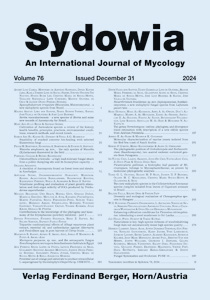
Odontoefibula orientalis – a high lead-tolerant fungal strain from a public dumpling site and its biosorption capacity Pimprapa Chaijak & Bifern Keawmanee Sydowia 76: 63-69 Published online on October 18th, 2023 This work aimed at isolation and characterization of lead (Pb)-tolerant fungi from a public dumpling site soil and at immobilizing the isolated fungi on agricultural waste biochar for Pb removal from the aqueous solution. After enrichment in the 100 ppm Pb concentration for ten times, a total of 21 fungal strains were isolated from the soil sample on potato dextrose agar plate. The fungal strain DP13 with the highest Pb adsorption capacity of 71.40±0.62 mg/g at a Pb concentration of 100 ppm was selected and identified by ITS sequencing as Odontoefibula orientalis. The Pb tolerance was shown with various Pb concentrations of 10 to 10,000 ppm. Moreover, O. orientalis immobilized on rice straw biochar provided a maximal Pb removal ability of 98.37±0.55 % with a contracting time of 24 h at an initial concentration of 100 ppm. This fungus species was previously unreported as a potential bioadsorbent for the removal of Pb ion. Its Pb tolerance can be exploited in the remediation of Pb from the environment in future. Keywords: bioremediation, biosorption, heavy metal, lead, filamentous fungi. |
 |